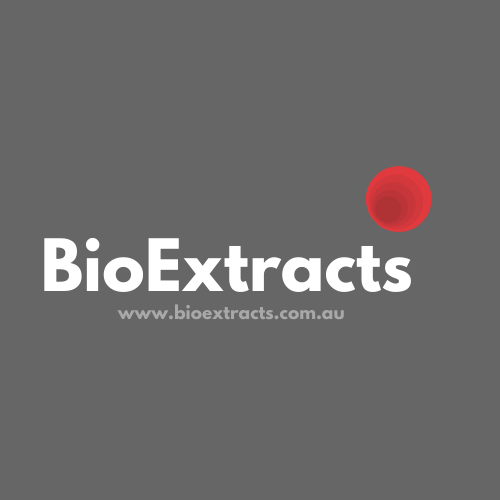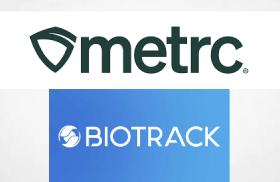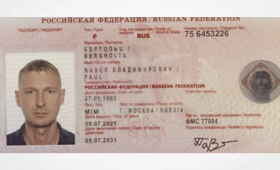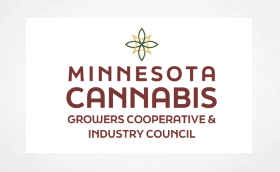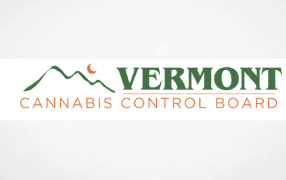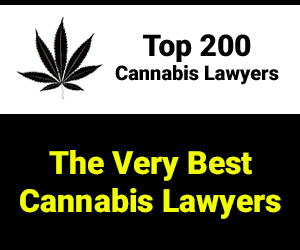What is Bioavailability?
The term “bioavailability” refers to the quantity of a compound (including medicines or substances found in food) that enters the bloodstream when it is introduced into the body. When you use any product, it must first be transferred from the administration site into the bloodstream. The way you consume a product can affect how much of it becomes active in the body and how long the effects will last. This bioavailability describes the rate and total amount of a product that has an active effect once consumed or applied, and is measured as a percentage. Many popular routes of administration suffer from low bioavailability.
The bioavailability of CBD
The chemistry of the specific substance being administered can have a significant effect on bioavailability. CBD is a lipophilic molecule (meaning that it is attracted to and dissolves in lipids, oils, and fats) and does not dissolve well (if at all) in water. Since the human digestive system is water-based, it does not breakdown and absorb lipids well. CBD has an extremely low absorption rate if is not attached to some sort of fatty molecule. Most CBD will simply pass through the digestive system. Many oral CBD products have lipid-based absorption enhancers or are made using easily digestible fats (such as oils found in foods).
It is important to understand the differences between CBD products and how they are absorbed in order to find the right product for you. CBD products come in many forms with a wide range of concentrations – 10mg of CBD taken with a vaporizer is not the same as 10mg of CBD taken in an oral capsule or 10mg in a transdermal patch. Each CBD product has a unique path for entering the bloodstream and therefore has a different bioavailability. A CBD vaporizer will take effect almost instantly, while an ointment may release the same amount of CBD over a much longer period of time. Oral CBD bioavailability ranges from about 6-15% while vaporizing can be up to 50%. Topical and transdermal products have a bioavailability rate around 45%, and nasal sprays around 40%. Absorption can also vary from person-to-person, and some people might find certain products more practical.
Method of Ingestion of CBD products
The mode of administration is the most determinant factor for substances to enter the bloodstream, and each delivery method offers a different path to the bloodstream. There are many popular methods of consuming CBD, with specific products created for each application:
- Intravenous. When given intravenously, pharmaceuticals have 100% bioavailability because they enter directly into the bloodstream.
- Oral Ingestion (capsules & edibles). The most common method of using CBD is to take a product by mouth. The CBD can interact with acids or enzymes in the digestive system and affect bioavailability. After digestion, the CBD enters the bloodstream through the portal vein and into the liver, where it is further metabolized. During this process (called “first-pass metabolism”), the concentration of the CBD is reduced by enzymes before passing into the bloodstream. This low bioavailability for oral products has been driven the CBD industry to find ways to increase the amount of a product that is absorbed by the body, including:
- Carrier Oils. When CBD-rich extracts are combined with MCT (Medium Chain Triglycerides) oil, the body burns these fats and uses the CBD immediately. These products are low cost and easy-to-make, but they have low bioavailability.
- Water-Soluble CBD. ‘Water-soluble’ products use new technologies to break up the oil particles and suspend them in a liquid form, resulting in a greatly increased surface area and more ready absorption by the body. A standard CBD oil might result in <10% absorption, while a liposomal microemulsion (100-1000 nanometer) might have up to 20% absorption, and a nanoemulsion (25 nanometer) can have >50% absorption. These water-soluble products (e.g. water-soluble capsules and water-soluble tinctures) are more costly to produce, but can result in a 200-500% increase in effectiveness over traditional oil-based products. The duration of the effect may be slightly shorter.
- Sublingual (concentrates, tinctures and sprays). Sublingual application is when a tincture or spray is administered under the tongue. The solution is held there for 60-90 seconds before being swallowed. Some of the CBD is absorbed directly into the mucous membranes, reaching the bloodstream more rapidly and effectively and without being broken down by enzymes in saliva or by first-pass metabolism. The remaining compounds are swallowed and pass through the liver as any swallowed product does. The bioavailability of CBD by sublingual absorption (from glands under the tongue) is slightly higher than simply swallowing these same compounds. Companies are using flavour additives to mask the cannabis taste.
- Nasal. Nasal sprays allow a substance to be absorbed through the mucous membranes in the nasal passages.
- Inhalation (vaporized, smoked and dabbed). Inhaling is becoming one of the most popular methods of consuming CBD. The bioavailability of CBD via the highly permeable surface of the lungs results in a consistently quick onset with a shorter period of effectiveness. While inhalation is highly effective (fast and efficient delivery), it may not be suitable for all users.
- Topical (lotions, balms, salves and patches). Administering CBD directly to the skin using a wide variety of lotions, balms, and salves is a popular way to alleviate symptoms, including aches and skin issues.
- While this application method is by far the least popular, suppositories are a highly effective means of using CBD. Using a CBD suppository will show noticeable effects after less than 15 minutes and the effects can last for nearly 8 hours.
Which type of CBD products is the most effective?
While various methods are available for CBD ingestion, the decision will vary from person-to-person based on individual needs and comfort with each administration method. For example, you may be fine with vaping but aren’t happy with the short duration of the effects. Sublingual may be preferred for the quicker onset and long duration, but the taste is difficult to handle. No matter your situation, you should try different products until you find the one for you. This chart compares the onset and duration associated with each application method:
Method of Ingestion Bioavailability Onset Duration
| Oil-Based Oral (capsules, edibles) | Lowest | 30-90 minutes | Up to 7 hours |
| Oil-Based Sublingual (tinctures, sprays) | Low-Mid | 20-40 minutes | Up to 6 hours |
| Water-soluble Oral (capsules, edibles) | Mid-High | 15-45 minutes | Up to 5 hours |
| Water-soluble Sublingual (tinctures, sprays) | High | 10-20 minutes | Up to 4 hours |
| Inhalation (vape, smoke) | Mid-High | 2-5 minutes | Up to 3 hours |
| Topical (lotions, balms, patches) | Low | 60-90 minutes | Up to 6 hours |
| Suppositories | Highest | 10-15 minutes | Up to 8 hours |
What is Bioavailability?
The term “bioavailability” refers to the quantity of a compound (including medicines or substances found in food) that enters the bloodstream when it is introduced into the body. When you use any product, it must first be transferred from the administration site into the bloodstream. The way you consume a product can affect how much of it becomes active in the body and how long the effects will last. This bioavailability describes the rate and total amount of a product that has an active effect once consumed or applied, and is measured as a percentage. Many popular routes of administration suffer from low bioavailability.
The bioavailability of CBD
The chemistry of the specific substance being administered can have a significant effect on bioavailability. CBD is a lipophilic molecule (meaning that it is attracted to and dissolves in lipids, oils, and fats) and does not dissolve well (if at all) in water. Since the human digestive system is water-based, it does not breakdown and absorb lipids well. CBD has an extremely low absorption rate if is not attached to some sort of fatty molecule. Most CBD will simply pass through the digestive system. Many oral CBD products have lipid-based absorption enhancers or are made using easily digestible fats (such as oils found in foods).
It is important to understand the differences between CBD products and how they are absorbed in order to find the right product for you. CBD products come in many forms with a wide range of concentrations – 10mg of CBD taken with a vaporizer is not the same as 10mg of CBD taken in an oral capsule or 10mg in a transdermal patch. Each CBD product has a unique path for entering the bloodstream and therefore has a different bioavailability. A CBD vaporizer will take effect almost instantly, while an ointment may release the same amount of CBD over a much longer period of time. Oral CBD bioavailability ranges from about 6-15% while vaporizing can be up to 50%. Topical and transdermal products have a bioavailability rate around 45%, and nasal sprays around 40%. Absorption can also vary from person-to-person, and some people might find certain products more practical.
Method of Ingestion of CBD products
The mode of administration is the most determinant factor for substances to enter the bloodstream, and each delivery method offers a different path to the bloodstream. There are many popular methods of consuming CBD, with specific products created for each application:
- Intravenous. When given intravenously, pharmaceuticals have 100% bioavailability because they enter directly into the bloodstream.
- Oral Ingestion (capsules & edibles). The most common method of using CBD is to take a product by mouth. The CBD can interact with acids or enzymes in the digestive system and affect bioavailability. After digestion, the CBD enters the bloodstream through the portal vein and into the liver, where it is further metabolized. During this process (called “first-pass metabolism”), the concentration of the CBD is reduced by enzymes before passing into the bloodstream. This low bioavailability for oral products has been driven the CBD industry to find ways to increase the amount of a product that is absorbed by the body, including:
- Carrier Oils. When CBD-rich extracts are combined with MCT (Medium Chain Triglycerides) oil, the body burns these fats and uses the CBD immediately. These products are low cost and easy-to-make, but they have low bioavailability.
- Water-Soluble CBD. ‘Water-soluble’ products use new technologies to break up the oil particles and suspend them in a liquid form, resulting in a greatly increased surface area and more ready absorption by the body. A standard CBD oil might result in <10% absorption, while a liposomal microemulsion (100-1000 nanometer) might have up to 20% absorption, and a nanoemulsion (25 nanometer) can have >50% absorption. These water-soluble products (e.g. water-soluble capsules and water-soluble tinctures) are more costly to produce, but can result in a 200-500% increase in effectiveness over traditional oil-based products. The duration of the effect may be slightly shorter.
- Sublingual (concentrates, tinctures and sprays). Sublingual application is when a tincture or spray is administered under the tongue. The solution is held there for 60-90 seconds before being swallowed. Some of the CBD is absorbed directly into the mucous membranes, reaching the bloodstream more rapidly and effectively and without being broken down by enzymes in saliva or by first-pass metabolism. The remaining compounds are swallowed and pass through the liver as any swallowed product does. The bioavailability of CBD by sublingual absorption (from glands under the tongue) is slightly higher than simply swallowing these same compounds. Companies are using flavour additives to mask the cannabis taste.
- Nasal. Nasal sprays allow a substance to be absorbed through the mucous membranes in the nasal passages.
- Inhalation (vaporized, smoked and dabbed). Inhaling is becoming one of the most popular methods of consuming CBD. The bioavailability of CBD via the highly permeable surface of the lungs results in a consistently quick onset with a shorter period of effectiveness. While inhalation is highly effective (fast and efficient delivery), it may not be suitable for all users.
- Topical (lotions, balms, salves and patches). Administering CBD directly to the skin using a wide variety of lotions, balms, and salves is a popular way to alleviate symptoms, including aches and skin issues.
- While this application method is by far the least popular, suppositories are a highly effective means of using CBD. Using a CBD suppository will show noticeable effects after less than 15 minutes and the effects can last for nearly 8 hours.
Which type of CBD products is the most effective?
While various methods are available for CBD ingestion, the decision will vary from person-to-person based on individual needs and comfort with each administration method. For example, you may be fine with vaping but aren’t happy with the short duration of the effects. Sublingual may be preferred for the quicker onset and long duration, but the taste is difficult to handle. No matter your situation, you should try different products until you find the one for you. This chart compares the onset and duration associated with each application method:
Method of Ingestion Bioavailability Onset Duration
| Oil-Based Oral (capsules, edibles) | Lowest | 30-90 minutes | Up to 7 hours |
| Oil-Based Sublingual (tinctures, sprays) | Low-Mid | 20-40 minutes | Up to 6 hours |
| Water-soluble Oral (capsules, edibles) | Mid-High | 15-45 minutes | Up to 5 hours |
| Water-soluble Sublingual (tinctures, sprays) | High | 10-20 minutes | Up to 4 hours |
| Inhalation (vape, smoke) | Mid-High | 2-5 minutes | Up to 3 hours |
| Topical (lotions, balms, patches) | Low | 60-90 minutes | Up to 6 hours |
| Suppositories | Highest | 10-15 minutes | Up to 8 hours |
